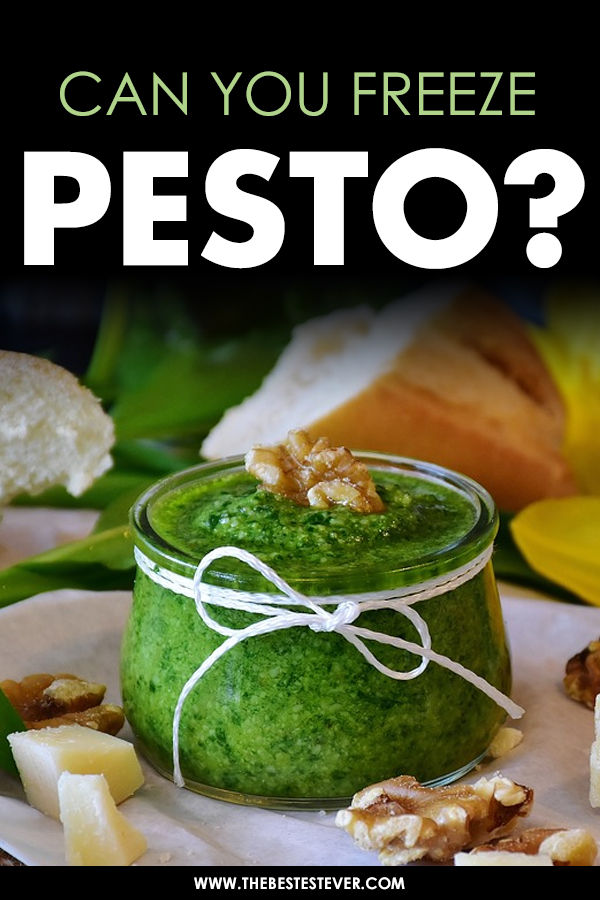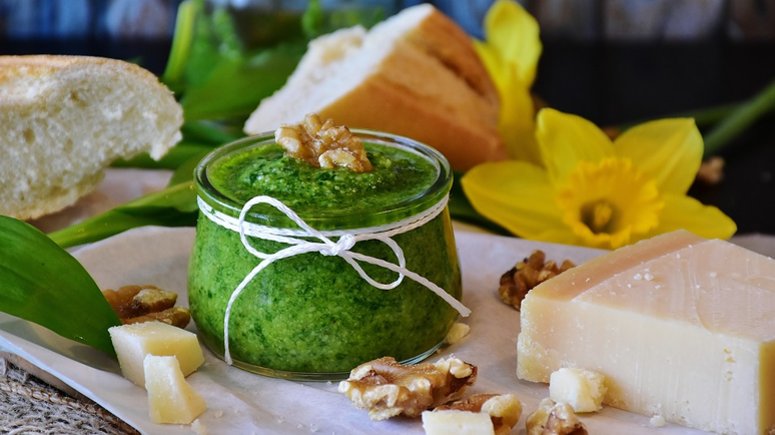
Pesto is a great food addition for the health conscious homemaker as it is packed with health benefits including heart-healthy mono-unsaturated fatty acids from the olive oil, iron from the leafy greens and vitamin C from the lemon juice that is added. For the kitchen savvy homemaker who makes pesto on the regular, whipping up large batches of pesto is the way to go and freezing the excess for preservation is also second nature.
Why Freeze Pesto?
The main ingredient in most pesto recipes is the seasonal herb basil. Preparing and freezing fresh basil pesto is a wonderful idea for preserving the fresh flavors of summer. Not only is pesto an ultra healthy herb, it is extremely versatile with a variety of uses as listed above. If you regularly grill meats for barbecues, pesto is perfect when brushed on these prepared meats.
The seasonal nature of basil means that the herb can get pricey during the winter months when it is least available. Having frozen pesto during these months saves tons of money and time that would be spent trying to locate your favorite herb.
If you are the outdoor friendly homemaker, then chances are that you will also have fresh basil growing in your backyard. If this is indeed your reality, then making and freezing pesto is the perfect use for an abundance of fragrant fresh herbs that might otherwise go to waste.
How To Freeze Pesto
One of the easiest methods for freezing pesto is using ice trays. Follow the steps below for a perfectly frozen pesto.
- Along with the trays for freezing, you will need a bottle of olive oil. Using a spoon, fill the compartments of the tray with the prepared pesto.
- Sprinkle a light layer of olive oil on top of the pesto on the cubes. This will keep the pesto from getting dark from contact with the air.
- Cover the trays with plastic wrap. Gently tap the plastic down on top of each cube to keep air from entering the wrapped container.
- Place the wrapped tray into the freezer for an hour or two, or until the cubes are frozen solid.
- Remove the frozen pesto from the freezer and remove the cubes from the tray.
- Place the tray upside down beneath a tap for freeing the cubes that are difficult to remove.
- Place the frozen cubes in freezer bags and return the bags to freezer for final storage.
Please Note: Pesto can also be frozen in small containers or mason jars. Frozen jars last a few months longer than cubes frozen in freezer bags.
Thawing Your Frozen Pesto
Frozen pesto can be thawed at room temperature for approximately 30 minutes prior to use.For a quick thaw, the pesto can be microwaved for a few seconds at a time.
Once thawed, stir the pesto thoroughly a d then serve.
Regularly frozen pesto should be consumed within three to four months for best taste.
